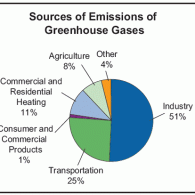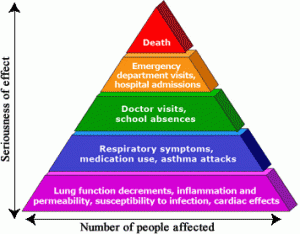Almost two months have passed since EBM Valletta 2013 took place. It was, indeed, an amazing event which gave all participants courage and inspiration to start acting and become part of the change all over Europe. Plenty of discussions, sessions, presentations and workshops were included in the programme, making the contribution of the participants both necessary and fun!
One of the most interesting parts was that of the workshops. With the cooperation of the rest of the EnWG’s board (Iris Hordijk, John Eikosidekas and Laia García), I was both glad and nervous to prepare and present a workshop called: “2013 as Europe’s Year of Air – The Future of Europe and Air Pollution”. In case you have missed it, don’t worry! Keep reading and by the end of this article you will feel like you were actually there (I promise)!
First of all… you already know that the air we breathe is essential for human life. Without it, forget life in our planet! But is this air high in quality or not? According to the most recent analyses of the European Environment Agency (EEA), the answer seems to be negative as air pollution remains a concern of vital importance for both public health and the environment.
Air pollution is a gas (or a liquid or solid dispersed through ordinary air) released in a big enough quantity to harm the health of people or other animals, kill plants or stop them growing properly, damage or disrupt some other aspect of the environment (such as making buildings crumble), or cause some other kind of nuisance (reduced visibility, perhaps, or an unpleasant odor). Some of the basic particles causing the phenomenon are: a) sulphur dioxide; b) carbon monoxide/dioxide; c) nitrogen oxide; d) volatile organic compounds (VOCs); e) ozone, and others. Today, there are three main sources of air pollution: a) traffic; b) power plants, and c) industrial plants and factories.
 There are almost half a billion cars on the road today, the engines of which give off air polluting exhausts such as carbon monoxide and VOCS. Smog (a combination of the words “smoke” and “fog”) is what remains in the atmosphere after all these fumes start to gather above city buildings, making the air in our lungs harmful for human health.
There are almost half a billion cars on the road today, the engines of which give off air polluting exhausts such as carbon monoxide and VOCS. Smog (a combination of the words “smoke” and “fog”) is what remains in the atmosphere after all these fumes start to gather above city buildings, making the air in our lungs harmful for human health.
Even though renewable energy sources, such as solar panels and wind turbines are helping us generate a bigger proportion of our power every year, the highest amount of electricity is still produced by burning fossil fuels such as coal, gas and oil, mostly in conventional power plants. Theoretically, power plants should produce nothing worse than carbon dioxide and water, but in practice, fuels are dirty and they don’t burn cleanly. As a result, power plants produce a range of air pollutants (e.g. sulphur dioxide, nitrogen oxides, etc.).
Products everyone uses come from plants that often release small but significant quantities of pollution into the air. Industrial plants producing metals like aluminum and steel, refine petroleum, produce cement, synthesize plants, or make other chemicals, are among those that can produce harmful air pollution. Most plants that pollute release small amounts of pollution continually over a long period of time. However, the effects can be cumulative. In addition, sometimes industrial plants release huge amounts of air pollution accidentally in a very short space of time.
 Air pollution can have a severe impact on people’s health. Research carried out on behalf of the European Commission as part of its review of EU air policy during the 2013 ‘Year of Air’ demonstrated that long-term exposure to particulate matter (PM) can lead to the vascular disease atherosclerosis, cause adverse birth outcomes and childhood respiratory diseases, while suggesting a strong causal link between particulate matter and cardiovascular and respiratory deaths (those results were presented to the Commission in Brussels). Also, according to the World Health Organization (WHO), more than 80% of Europeans are exposed to PM concentrations higher than those stipulated in the WHO 2005 Air Quality Guidelines (AQGs), which reduces the average life expectancy of EU citizens by 8.6 months.
Air pollution can have a severe impact on people’s health. Research carried out on behalf of the European Commission as part of its review of EU air policy during the 2013 ‘Year of Air’ demonstrated that long-term exposure to particulate matter (PM) can lead to the vascular disease atherosclerosis, cause adverse birth outcomes and childhood respiratory diseases, while suggesting a strong causal link between particulate matter and cardiovascular and respiratory deaths (those results were presented to the Commission in Brussels). Also, according to the World Health Organization (WHO), more than 80% of Europeans are exposed to PM concentrations higher than those stipulated in the WHO 2005 Air Quality Guidelines (AQGs), which reduces the average life expectancy of EU citizens by 8.6 months.
In general, the European Union acts at many levels to reduce exposure to air pollution: through legislation, through cooperation with sectors responsible for air pollution, through national, regional authorities and non-government organizations and through research. EU policies aim to reduce exposure to air pollution by reducing emissions and setting limits and target values for air quality. But what can WE as individuals do to improve the situation? Hereby, you can find a list with the top 10 simple things that are enough to make a difference:

1) Save energy by using low energy lamps, laptop computer instead of a desktop, dry your clothes outdoors and heat insulate your home.
2) Save water when you can.
3) Reduce or even cut the use of car. Instead you can use public transportation more often, ride a bicycle or (guess what) walk!
4) Never burn household waste.
5) Cut out garden bonfires.
6) Grow your own garden with organic food.
7) Cut the chemicals.
8) Use water-based paints and glues.
9) Reduce, reuse and recycle.
10) Don’t smoke.
I could carry on forever, writing about the phenomenon of air pollution and its damaging effects on humans and the environment. But this is not enough. We must all contribute for this problem to be solved as WE were the first ones that became part of causing it. There are 3 steps which will lead us to the desirable results: a) realize the problem by getting knowledge about it; b) raise other people’s awareness regarding it, and c) START ACTING NOW!
Written by Christianna Fokia, AEGEE-Athina and Secretary of the EnWG

